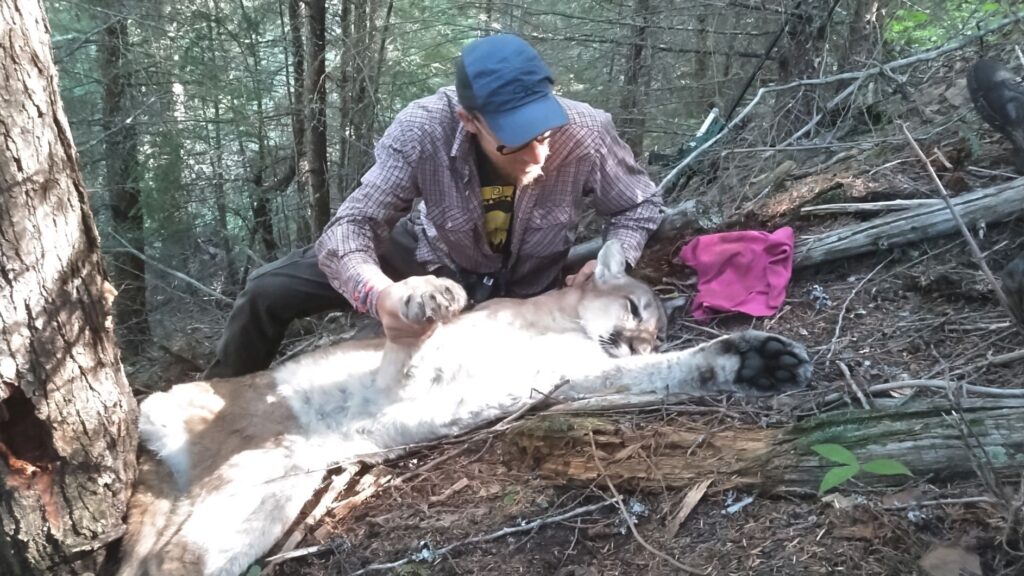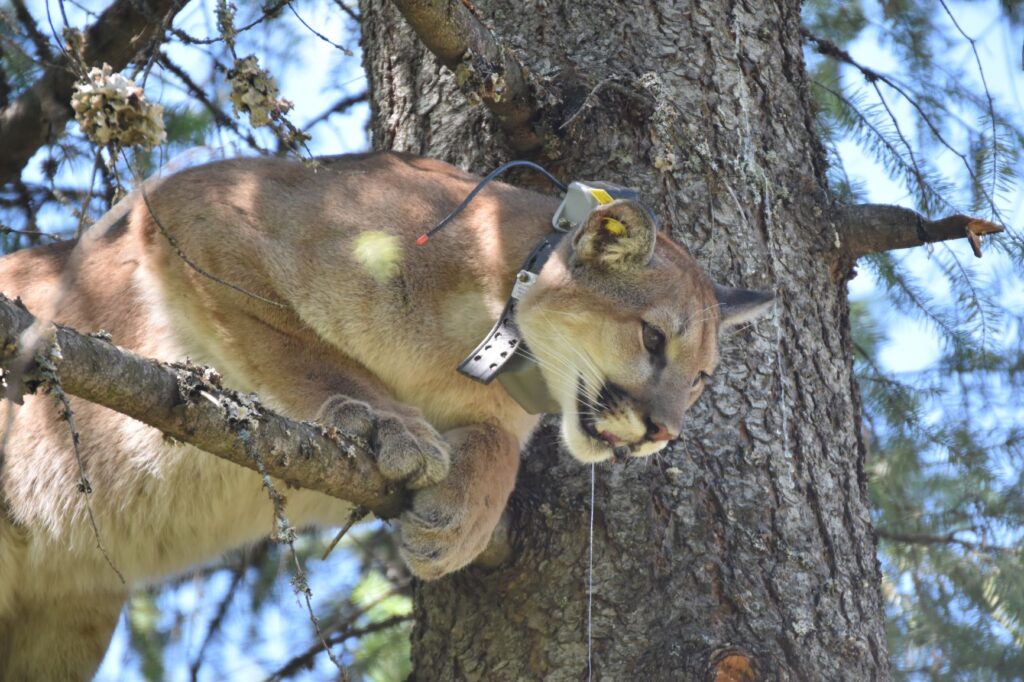Mountain lions are one of the most elusive animals in North America. Chances are if you spend time in the wilds you have rousted a cougar out of its bedding area without even knowing it. But some of these big cats get habituated to the human world, and losing their life because of it. Kalispel tribal biologist Bart George is working on a study to see if he can haze these felines into keeping their distance.
Washington has seen an uptick in cougar sighting and attacks of livestock and pets in the last few years. Many of these cats have been reported hanging closer to homes and sticking around longer. This has lead the state to euthanize more cats in recent years. As a houndsman and avid cougar hunter, Bart has worked with WDFW to kill many of these cats. But he wanted to be proactive and devised a study that could save the lives of livestock, pets and the cougars.
Using a crew of volunteers, tracking dogs, paintballs, and some new GPS technology, Bart is working to change the cats’ behavior. He wants to see if repeated harassment will make the cougars warier and move farther away from human stimuli.

Calls of cougar sightings get routed to Bart and he uses a pack of well-trained hounds to chase the cat up a tree. He then calls off the dogs, and using a dart gun delivers a tranquilizer to the cat’s hind quarters. The cats usually climb down and slink off a few yards before the sedative takes full effect.
Bart and the team then take weight measurements, determine age and sex, and fit it with two tracking collar. One collar stays on all the time and sends periodic data to Bart computer. The other collar is new for this study. It can be toggled on and off from Bart’s handheld Garmin GSP unit and can give location data every 2 sec to within feet of the animal.
I joined Bart and his volunteers in early July to track and remove collars from a 5 year old female that was done with the study. We headed up a steep hillside just east of Usk. As we started moving, Bart played a popular hunting podcast, Meat Eater, at 80 decibels, the volume of loud outdoor voice. As we approached the cat he frequently checked his GPS unit which was updating the cat’s location. When we were 93m away the cat left its bedding area under a rock outcrop and took off down the opposite slope.
Bart takes data on slope and vegetation structure to determine how much energy the cougar spent fleeing the scene. We then waited till that cat stopped moving at 507m, up a draw on the far slope. From here he radioed into Bruce Duncan, a volunteer and fellow houndsman, to release the dogs. From our vantage point we could not see the dogs but we could hear them baying.

Once the cat was darted and both safely on the ground and knocked out we removed the two tracking collars, waited for the tranquilizer to work through the cat and delivered a reversal drug. Within the a few minutes the cat was up and disappeared into the woods with the hope that it will be warier of human activity.
So far the data is showing a change in the cats’ behaviors. Most cats flush at 40-50m the first time and the distance increase with each successive approach. They also seem to expend more energy moving away. Bart has collared around 40 cats this year and this was his 97 treeing. He hopes this study can be used in other parts of the country where these big cats intersect with our activities.
Originally published as “Creating a Scaredy-Cat” (Nature column) in the September-October 2020 double issue.
Adam Gebauer has a compulsion for outdoor activities and is an avid chaster of snow, rock, water, and vistas.













